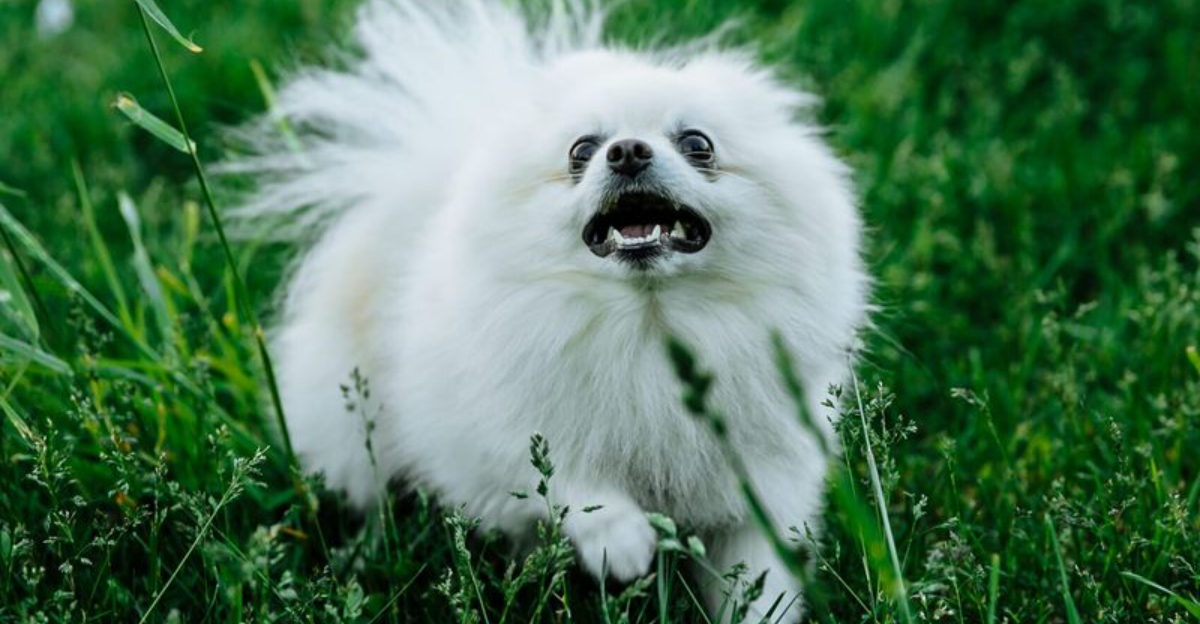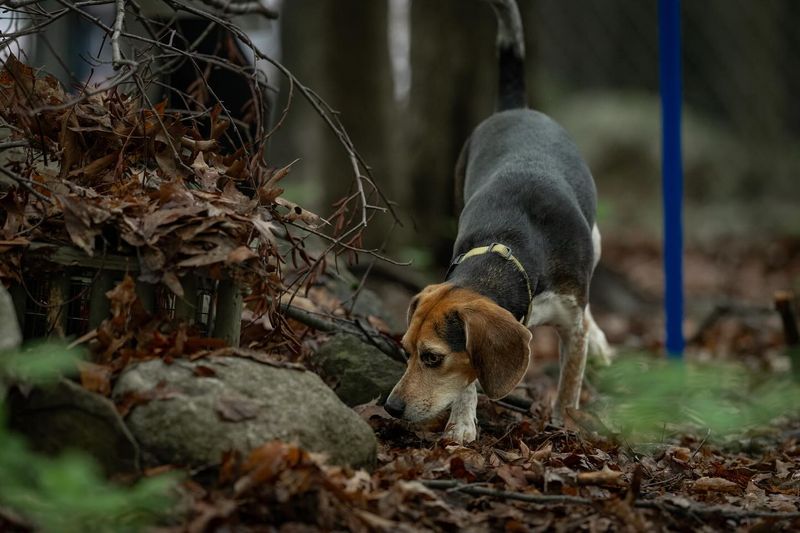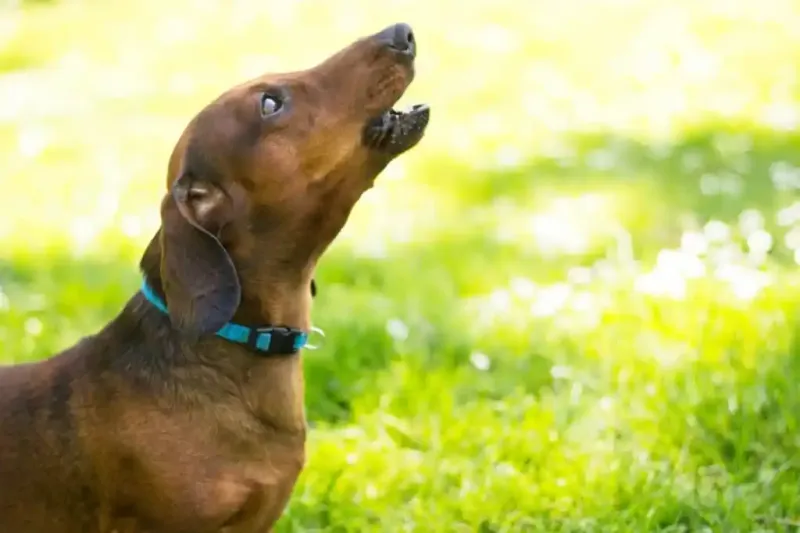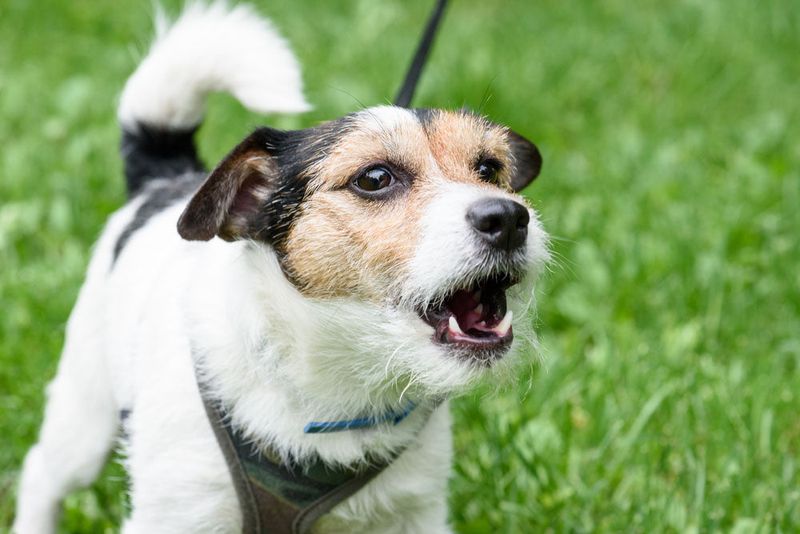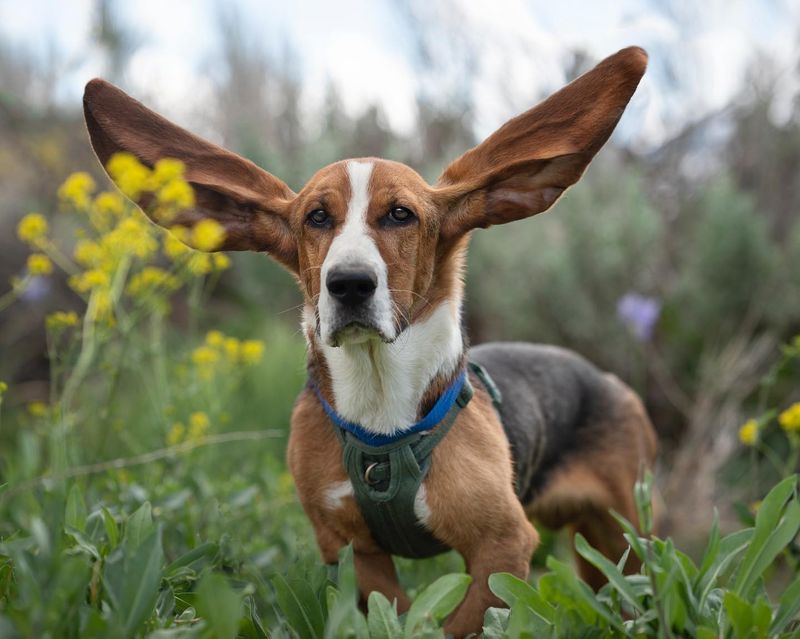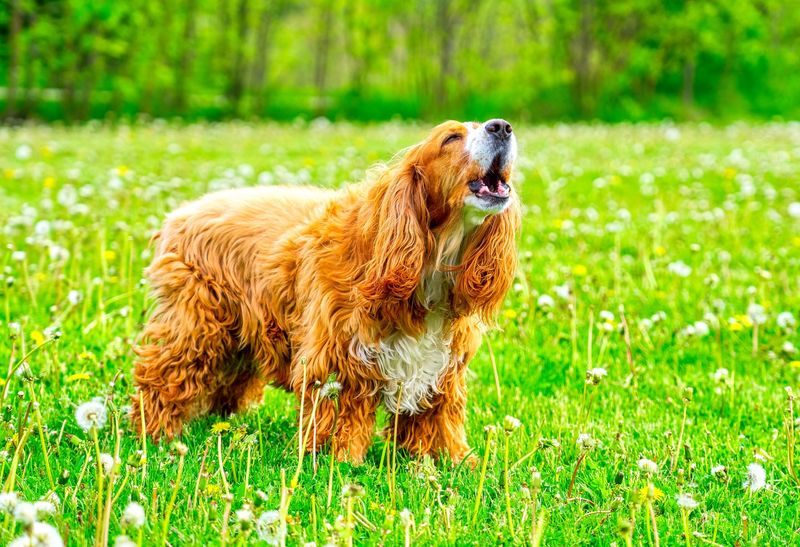Dogs have long been known as man’s best friend, but some breeds have a reputation for being especially vocal. Understanding these breeds’ barks can help owners address their needs and foster a harmonious relationship. From alerting to strangers to expressing their feelings, these breeds have something to say! Here, we’ll explore 13 of the noisiest dog breeds and uncover what their barks really mean. Each entry dives into the unique reasons behind their boisterous behavior, along with tips to better comprehend their canine chatter. Whether you’re a dog owner or enthusiast, you won’t want to miss this insightful guide.
Beagle
With a howl that can be heard for miles, the Beagle is a vocal delight. Known for their curious nature, Beagles often bark to communicate their enthusiasm for exploration. These intelligent hounds use their voices to alert their owners of new scents. Their howls are not just noise; they’re an expression of excitement and discovery.
Beagles have been hunting companions for centuries, and their vocalizations were crucial for tracking games. Their cheerful barks often signal companionship and joy, making them a family favorite. Understanding their howls can enhance the bond between owner and pet.
Siberian Husky
Embodying the spirit of the wild, Siberian Huskies express themselves through a distinct howl. Often likened to wolves, Huskies use their voice to communicate with pack members and assert their presence. This breed’s vocalizations are a blend of energy and sociability.
Huskies howl to express excitement or boredom and have a unique way of conversing with humans. Their vocal nature can be traced back to their history as sled dogs, where communication was key. Understanding their howls can provide insights into their needs and emotions, enhancing the human-canine connection.
Chihuahua
Tiny but mighty, the Chihuahua’s bark is often bigger than its bite. These small dogs are known for their vocal nature, often barking to protect their territory. Despite their size, Chihuahuas have a strong need to communicate their feelings.
Their barks can be a sign of alertness or a call for attention. With roots tracing back to ancient Mexico, these dogs have been companions for royalty and commoners alike. Embracing their vocal tendencies can lead to a deeper understanding and appreciation of their spirited personalities.
Dachshund
With its elongated body and distinctive bark, the Dachshund is a charming conversationalist. Originally bred for hunting, these dogs use their voices to signal excitement and alertness. Their barks are an extension of their lively nature.
Dachshunds often bark to protect their loved ones or to express joy. Their vocal nature is a testament to their keen sense of smell and unwavering curiosity. By understanding their barks, owners can tap into the Dachshund’s world of adventure and playfulness. Their voice is a window into their vibrant souls.
Yorkshire Terrier
Yorkshire Terriers, or Yorkies, are tiny dogs with a big personality. Their bark is often an expression of their lively and affectionate nature. Yorkies use their voice to convey curiosity and enthusiasm for life.
These terriers were once used to catch rats in textile mills, and their vocalizations were a tool for alerting to intruders. Today, their barks echo their protective instincts and desire for interaction. Embracing their vocal ways can enhance communication and deepen the bond between Yorkie and owner, celebrating their bold spirit.
Miniature Schnauzer
With a bark that commands attention, the Miniature Schnauzer is a vocal companion. Known for their spirited personalities, these dogs often bark to express curiosity and protectiveness. Their vocal nature is a reflection of their intelligent and alert demeanor.
Originally bred as farm dogs, Schnauzers use their bark to signal danger and communicate with their human companions. Their sounds can be a mix of excitement, concern, and the need for companionship. Understanding their vocal cues can lead to a more harmonious relationship, celebrating their expressive charm.
Jack Russell Terrier
Jack Russell Terriers are energetic bundles of joy, known for their lively barks. These small but fierce dogs use their voices to express excitement and determination. Their vocal prowess is a testament to their intelligence and keen hunting instincts.
Bred for fox hunting, Jack Russells bark as a way to communicate with their handlers and alert them to potential prey. Their barks are a blend of enthusiasm and alertness, making them both charming and spirited companions. Owners can enhance their relationship by understanding and embracing these vibrant vocalizations.
Pomeranian
Pomeranians, with their fluffy coats and spirited barks, are a bundle of joy. These small dogs are known for their expressive vocalizations, often used to capture attention and convey excitement. Their barks are a reflection of their lively and playful nature.
Historically, Pomeranians were larger sled-pulling dogs in the Arctic, but today, their vocalizations serve as a way to connect with their human companions. Their barks can signal happiness, curiosity, or the desire for interaction. Embracing their vocal tendencies can lead to a deeper understanding and joyful companionship.
Basset Hound
Basset Hounds are known for their soulful howls and droopy expressions. These lovable hounds use their voices to communicate emotions and signals to their owners. Their deep, melodic howls are a testament to their affectionate and gentle nature.
Bred for hunting, Bassets use their vocalizations to alert hunters to scents and trails. Their deep howls are a blend of longing and companionship. By understanding their unique sounds, owners can tap into the rich tapestry of emotions expressed by these gentle giants, enhancing their bond with these endearing companions.
Cocker Spaniel
Cocker Spaniels are joy-bringers with their playful barks and affectionate demeanor. Known for their friendly nature, these dogs use their voices to express joy and curiosity. Their vocalizations are an extension of their lively personalities.
Historically, Cocker Spaniels were used as hunting dogs, and their barks were crucial for communication during hunts. Today, their barks can signal happiness, excitement, or the need for companionship. Understanding these vocal cues can deepen the connection between owner and pet, celebrating the spaniel’s vibrant and loving spirit.
Border Collie
Border Collies, known for their intelligence and energy, have a distinctive bark that reflects their hardworking nature. These dogs use their voices to communicate with both humans and livestock. Their vocalizations are a testament to their problem-solving skills and alertness.
Bred as herding dogs, Border Collies use barking to guide and manage sheep. Their sounds express commands, warnings, and excitement. By understanding their vocal cues, owners can enhance their communication with these astute companions, celebrating their dedication and zeal for work and play alike.
Shih Tzu
Shih Tzus, with their regal appearance and gentle barks, exude elegance and charm. These dogs use their voices to communicate affection and curiosity. Their soft barks are a reflection of their nurturing and friendly personalities.
Originally bred for royalty, Shih Tzus have a history of companionship and loyalty. Their barks can signal contentment, inquisitiveness, or a desire for connection. Embracing their vocal tendencies can deepen the bond between owner and pet, allowing the Shih Tzu’s gentle spirit to shine through their delightful noises.
Maltese
Maltese dogs, with their luxurious coats and gentle barks, are symbols of grace and charm. These small companions use their voices to express joy and seek interaction. Their light barks are an extension of their affectionate and playful nature.
Historically, Maltese were favored by aristocrats and known for their companionship. Their barks can signal happiness, curiosity, or a request for attention. Understanding their vocal cues allows owners to connect more deeply with these charming companions, appreciating their cheerful presence in every bark and wag.
